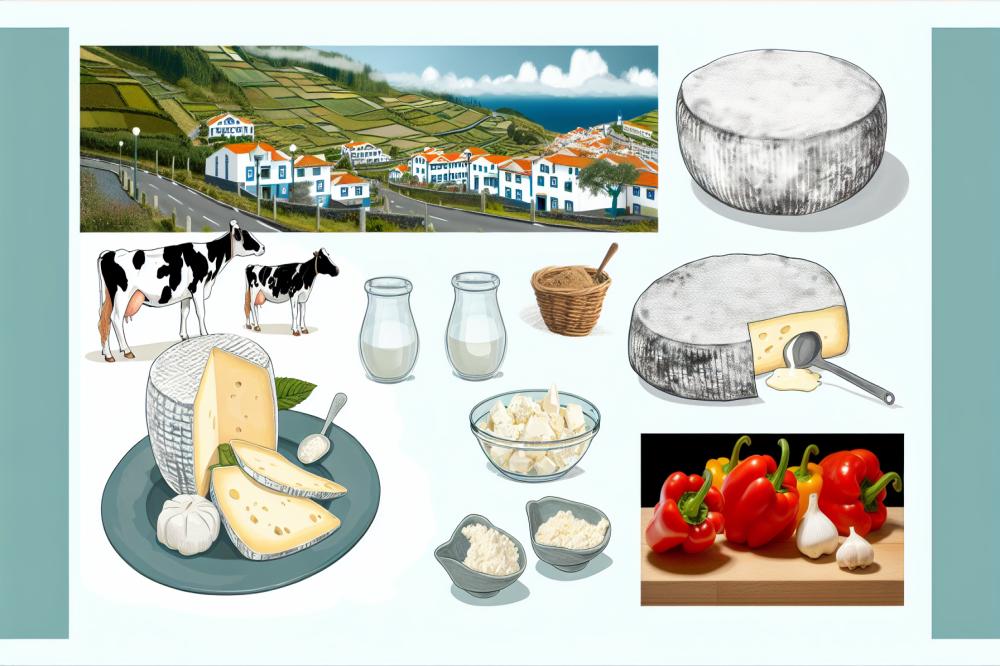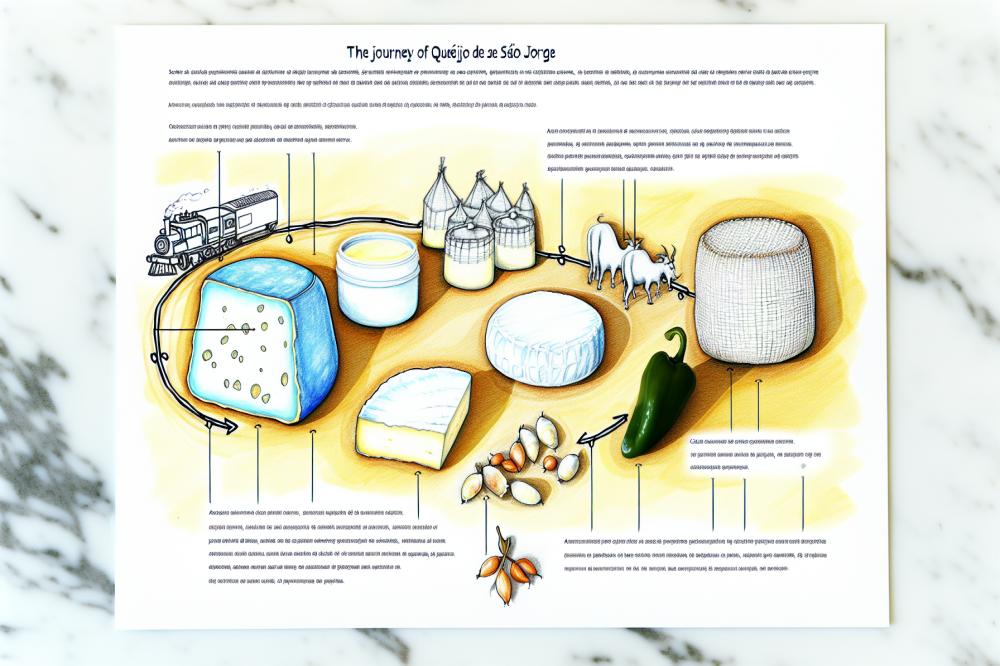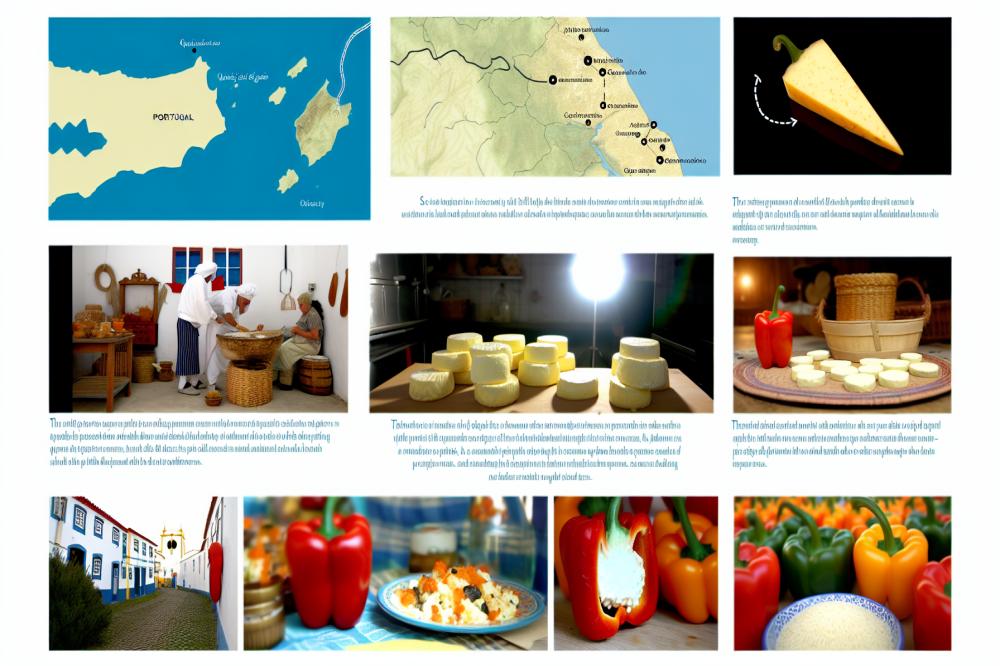Introduction
Portugal boasts a rich and diverse cheese culture, celebrated for its flavors and textures. Among the numerous varieties, one stands out in both taste and tradition. cheeseofchoice.org/how-queijo-de-serpa-is-handcrafted-in-alentejo”>Queijo de São Jorge, a semi-hard cheese hailing from the Azores, enjoys a prestigious spot in the hearts of cheese lovers across the nation. Its unique characteristics make it a symbol of regional pride.
The Azores archipelago, with its lush landscapes and volcanic soil, provides the perfect backdrop for dairy farming. The rich pastures contribute to the milk’s quality, which plays a vital role in crafting this renowned cheese. Queijo de São Jorge captivates the palate with its creamy texture and robust flavor. Many people in Portugal consider it a staple, used in various dishes and enjoyed on its own.
This cheese is not just a culinary delight; it represents the heritage and identity of its origin. The recipes and techniques passed down through generations highlight its significance. From local cheese boards to fine dining, its popularity stretches far beyond the Azores. Those who experience its distinctive flavor profile often find themselves returning for more.
As we explore the fascinating journey of Queijo de São Jorge, we’ll uncover what makes this cheese a cherished element in Portuguese cuisine. Each bite tells a story rooted in history, geography, and tradition, making it a true hallmark of Portugal’s gastronomic scene.
Queijo de São Jorge

Queijo de São Jorge is a traditional cheese from the Azores, particularly associated with São Jorge Island. This cheese has a rich history that dates back over a century. Its origins can be traced to the 15th century when settlers began to raise cattle and produce dairy on the islands. Due to its long standing in local culture, the cheese has not only survived but thrived, becoming a staple in Portuguese cuisine.
Production methods have remained largely traditional. Milk from cows grazing on the lush pastures of São Jorge is the main ingredient. This milk is unpasteurized, which helps retain the natural bacteria and flavors, contributing to its character. Artisan cheesemakers follow time-honored techniques, often using wooden molds, which affect the texture and taste. The cheese is cured for a minimum of three months, sometimes much longer, which deepens its flavor profile.
Regions within the Azores contribute to distinct tastes. São Jorge Island stands out, but other islands also participate in the production. Each area has its own environmental conditions, which influence the milk’s flavors. The unique grasses and herbs that cows eat play a significant role in shaping the cheese’s aromatic qualities. As a result, cheeses from different islands can have varying nuances.
The role of the cheese in Portuguese culture cannot be overstated. It is often served at family gatherings and celebrations, symbolizing hospitality. Queijo de São Jorge appears on the traditional cheese boards, enjoying popularity in both informal and gourmet settings. Pairing it with local wine enhances its distinct flavor, making it a favorite among locals and tourists alike.
This cheese has gained recognition internationally and has even received a Protected Designation of Origin (PDO) status. This designation highlights its authenticity and ensures that only cheeses made in designated areas can bear its name. Such recognition also promotes the cultural heritage of the Azores and supports local producers.
distinctive flavor profile

Queijo de São Jorge boasts a flavor profile that stands apart in the world of cheeses. This semi-hard cheese possesses a rich and savory taste that captivates many. Notes of nuttiness and hints of spice make each bite a delightful experience. As the cheese ages, its flavor deepens, developing a robustness that appeals to many cheese lovers.
The aging process involves storing the cheese in cool, humid environments. During this time, the flavor matures, and complex undertones emerge. Microbial cultures play an essential role as well. These bacteria and molds contribute to the cheese’s unique conditions. Different strains of bacteria produce varying tastes and aromas that enhance the overall sensory experience.
The Azores also influence the cheese’s flavor. The lush pastures and diverse flora on the islands create a special diet for the cows. Rich grasses and wild herbs impart distinct flavors to the milk. A combination of these natural elements results in a product that is both flavorful and aromatic.
When comparing it to other Portuguese cheeses, some similarities and differences arise. For instance, Queijo da Serra has a creamier texture, while São Jorge offers a firmer bite. Both deliver their own character, reflecting the regions they come from. While many Portuguese cheeses aim for distinct profiles, Queijo de São Jorge stands out through its balanced earthiness and complexity.
Enjoying this cheese can offer a journey through its taste. Pairing it with olives or crusty bread enhances its qualities. The contrast between flavors provides an experience that is both satisfying and memorable. Ultimately, those who appreciate cheese will find something truly special in its taste.
Recipe: Queijo de São Jorge Stuffed Peppers

This recipe brings a flavorful twist to ordinary stuffed peppers. With the addition of rich cheese, each bite explodes with taste. Gather your ingredients and let’s create a delicious dish that impresses family and friends.
Ingredients:
- 4 large bell peppers
- 200g grated cheese
- 100g cooked rice
- 1 small onion, finely chopped
- 2 cloves garlic, minced
- 150g ground beef or mixed vegetables for vegetarian option
- 1 teaspoon olive oil
- Salt and pepper to taste
Instructions:
- First, preheat your oven to 180°C (350°F).
- Next, cut the tops off the bell peppers and remove the seeds carefully.
- In a skillet, heat olive oil over medium heat. Sauté the onion and garlic until they soften.
- Add ground beef or vegetables to the pan. Cook until browned, stirring frequently.
- Stir in the cooked rice along with half of the grated cheese. Season this mixture with salt and pepper according to your taste.
- Carefully stuff the peppers with the filling and place them upright in a baking dish.
- Top each pepper with the remaining cheese, spreading it evenly.
- Finally, bake for 30-35 minutes, or until the peppers are tender and the cheese is bubbling and golden.
Nutritional Information:
Each stuffed pepper contains approximately:
- Calories: 350
- Protein: 18g
- Fats: 15g
- Carbohydrates: 32g
Health Benefits:
This cheese adds more than just flavor. It is a good source of calcium, essential for strong bones. Additionally, it contains proteins vital for muscle repair and growth. The bell peppers contribute vitamin C and other nutrients, boosting immunity. These elements promote overall health, making this dish both tasty and nutritious.
A Final Note on Queijo de São Jorge

This cheese holds a significant place in the landscape of Portuguese culinary culture. Its flavor profile is truly remarkable. The rich, nutty taste, paired with its slight tang, makes it stand out among other regional cheeses. Recognized for its quality, it has become a staple in many Portuguese households and restaurants. The craftsmanship involved in its production is something to appreciate.
Making stuffed peppers with this distinctive cheese is an experience worth trying. The harmony of flavors in this dish showcases the essence of Portuguese gastronomy. It’s a celebration of local ingredients, including peppers and cheese. Diving into this recipe can serve as an excellent introduction to the wonders of Portuguese cuisine.
Exploring cheeses from the Azores adds even more depth to your culinary journey. Each type tells a story of its origins and traditions. As you experiment and enjoy these flavors, you’ll begin to understand the rich heritage of Portugal’s cheese culture. Embrace the flavors and don’t hesitate; gather your ingredients and create something delicious!



